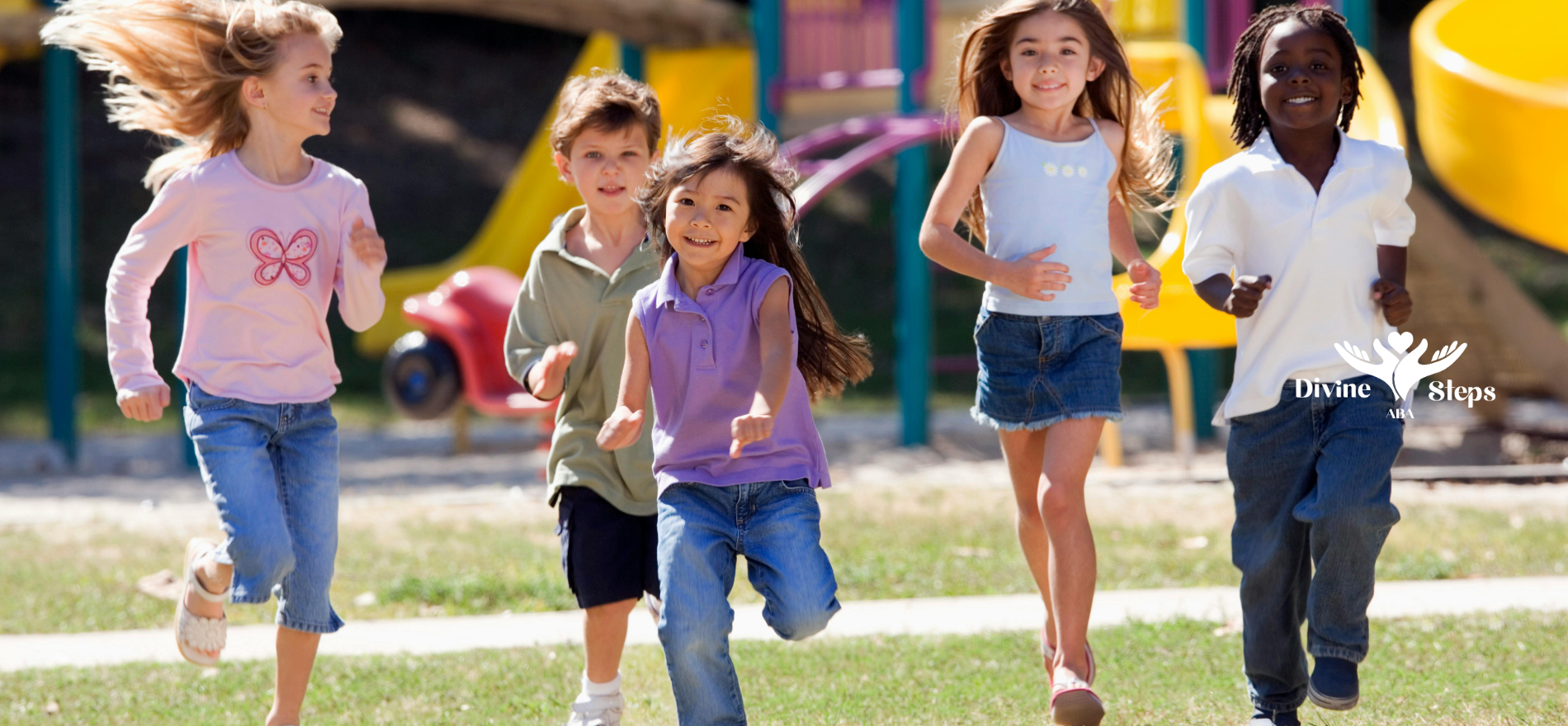Website by CWS
Early Childhood Crossroads: Should You Choose ABA Therapy or Preschool?
As someone who’s walked alongside many families through early intervention, I know how overwhelming this decision can be. ABA therapy provides a focused, structured environment, while preschool offers group learning and social opportunities. But what truly matters is your child’s growth.
I worked with a family who saw no progress in preschool. Their son couldn’t follow group instructions or connect with peers. After switching to ABA therapy in Maryland, we created a custom plan and watched him learn to express his needs and play cooperatively within months.
Key Differences Between ABA Therapy and Preschool
ABA therapy and preschool help children in different ways as they grow. ABA therapy is a special approach for kids who have certain behaviors or need extra help with their development, often with autism. In ABA therapy, children get one-on-one support in a controlled place. It works on building skills by using positive reinforcement.
Preschool is different. At preschool, kids learn and play in a group environment. They have lots of social interactions and work on academic skills. The classroom setting uses a standardized curriculum, which means everyone follows the same plan. It may not meet every individual need the way ABA therapy can.
Approach to Learning and Development
ABA therapy uses an individualized approach to help each child learn based on their strengths and where they need help. Therapists take time to watch each child. They make plans to meet the child’s specific needs. For kids with autism, ABA therapy looks closely at foundational skills. This includes things like how to talk, how to manage feelings, and how to take care of daily tasks.
On the other hand, preschool has a learning environment that is set up for kids to be in groups. Children here work on things like language, early reading or math, and playing together. Preschools often look at how the whole group is doing. In ABA therapy, the focus is on individual progress and the challenges that each child faces.
Both ABA therapy and preschool want to help children grow, but the way they do it is different. If you are thinking about which one is good for your child, think about what your child’s needs are and how each place can help. Next, we will look at teaching styles and places where learning happens to help you decide what may work best.
Teaching Methods and Environment
ABA therapy helps children learn in a supportive environment. With this approach, each child gets one-on-one help that fits what they need. Therapists use behavior analysis to check progress. They work to build positive habits and make challenges less hard. This focus on one child at a time is best for kids who need some additional support.
Preschools are different. They take place in a classroom setting. Here, group activities are important. Kids talk, play together, and do planned tasks. They follow a set course that helps them reach big group goals. This way is good for building social skills and teaching the basics they need to start school.
ABA therapy gives a customized experience. On the other hand, preschool gives an inclusive environment with equal chances for everyone to learn. Knowing about these teaching methods and if they match your child’s unique needs can help you make the right choice.
Think about how the benefits of ABA therapy and preschool are not the same, especially for children who need more help.
Benefits of ABA Therapy for Children with Special Needs
ABA therapy gives interventions that fit a child’s specific needs. The focus is on helping improve behavior and teach new skills. Therapists use positive reinforcement in this process. This helps children build important social, communication, and self-control skills. These are all key for their growth.
ABA therapy also allows progress to be tracked often. This makes it easier to make changes so children can develop in the best possible way. For kids with autism, ABA therapy stands out because plans are made to help each child meet their own goals fast.
Let’s look at how tailored learning works in ABA therapy and how it helps with specific needs.
Tailored Learning Strategies
ABA therapy works by finding ways that fit a child’s specific needs. It looks at the child’s strengths, problems, and how they act. In therapy, plans be made just for the child. The therapists break tasks down into smaller steps that are easier to handle.
With ABA therapy, children work on building their communication skills. Adults give praise for good talking. They help with things like making eye contact or saying what they want. This lets children keep getting better bit by bit.
The method also uses positive reinforcement. This kind of reward helps children keep good actions and slowly drop difficult ones. Parents like the collaborative approach because it means working together with the child during every step.
The child moves at their own speed, which means there’s a better chance for lasting progress. Using these tailored ways of learning, aba therapy helps with making better choices and changes in behavior.
Focus on Behavioral Improvements
Behavior analysis is a key part of ABA therapy. It helps children with autism spectrum disorder get better in big ways. ABA therapy takes on tough behaviors in these ways:
How ABA Therapists Guide Behavioral Progress
🔍 Identify Problem Behaviors
Therapists look for challenging behaviors that keep a child from making progress.
📊 Create Data-Driven Plans
With data and facts, they make plans to encourage positive behavioral changes.
🌟 Strengthen Positive Actions
Sessions work on building up good actions and cutting down bad ones.
Kids get the most from work on things like less aggression or better teamwork. These methods help them move past daily problems.
ABA therapy is all about giving care that fits each child. This helps the plans work for any child’s needs and bring steady growth over time.
These steps also get children ready for bigger goals in school and social life.
Advantages of Preschool for Early Childhood Education
Traditional preschool programs have an inclusive environment. They focus on social interactions and help children build social skills. Kids learn how to make friends, share, and join group activities here. This can help all children, as they have time to get used to being with people and try new things.
These preschools also give the children a chance to learn about academics and take part in different activities. This way, they get ready for the start of regular school.
For children who have sensory sensitivities, these preschool programs can still give many good experiences. Kids get to explore, play, and meet others. But, the help kids get at preschool is often not as much as they would get in ABA therapy, so it might not be as focused on the needs of each child.
Now, let's look more at how a traditional preschool helps with social skills. We will also see how different learning activities work in this setting.
Social Skill Development
Preschool is often the first place where children learn important social skills in a group setting. They start to see how to play, work together, and make friends.
In group play and during circle time, children talk, share, and take part with others. This is a good way for them to practice new skills, try teamwork, and learn from people around them.
Teachers are with them as they guide children through different social interactions. The teachers help kids by showing them how to take turns, share their things, and solve problems with others. Children use these lessons as they grow, both in and out of the classroom.
ABA therapy is more focused on how each child grows on their own, but preschool is about socialization in a group setting. Both, however, help us see what a child needs and how they grow. With both approaches, children get better chances to build strong social skills for the rest of their lives.
Exposure to Diverse Learning Activities
Preschools mix learning with fun tasks, giving kids many ways to learn. Children who have sensory sensitivities get to join in different lessons that help with things like creativity and motor skills.
Kids will do things like music, art, and science. They gain academic skills and get better with their minds and bodies. Take a look at some common things you will find in a preschool and what they do for kids:
🎨 Art Programs
Lets children grow creativity and motor skills
🎵 Music and Dance
Helps with sensory integration
📖 Group Storytime
Grows communication skills
🏃 Outdoor Play
Gets kids making better body movement
🔬 Science Activities
Builds inquiry and reasoning
These diverse activities help preschoolers try new things. They get a chance to find what they like most and work on things that matter for their growing bodies and minds, like academic skills, communication skills, and motor skills.
Conclusion
In the end, picking between ABA therapy and preschool for your child is about looking at a few different things. You need to think about their individual needs and what you want them to get out of this time. ABA therapy gives kids learning plans that are made just for them. It helps with how they act and can be really good for kids who have special needs.
Preschool, on the other hand, is great for building social skills. Your child can take part in many activities there. It is a place where they can grow and learn in a set routine every day. The best thing to do is to look at what your child needs most. This will help you pick the right path for their early learning.
Ready to Take the Next Step in Your Child’s Journey?
Choosing between ABA therapy and preschool isn’t easy, but you don’t have to do it alone. At Divine Steps ABA, we specialize in personalized autism services in Maryland that support your child’s growth from the very first step. Our team is here to guide you and provide the right support at the right time.
📞 Reach out to Divine Steps ABA today at 888-301-4065 or 📧 email us at info@divinestepstherapy.com to schedule a consultation. Let’s explore the best path forward—together.
Frequently Asked Questions
What age is best to start ABA therapy or preschool?
Starting early intervention is very important for good results. ABA therapy should start as soon as there is an autism diagnosis. This usually happens when a child is about 18 to 30 months old. Preschool is a good time when the child reaches important steps in their growth and is ready for school. This often happens between the ages of three and five.
How do I choose between ABA therapy and preschool for my child?
Think about your child’s unique needs and the level of support they need. It is good to talk with your family members to look at all the options. Try to focus on individual needs, parental involvement, and the special education help that is there. Both places can work together to help with your child’s overall development. When you choose, keep in mind the long-term goals for growth.
Sources:
- https://www.autismspeaks.org/applied-behavior-analysis
- https://pmc.ncbi.nlm.nih.gov/articles/PMC4205103/
- https://pubmed.ncbi.nlm.nih.gov/28523969/
- https://www.kennedykrieger.org/stories/interactive-autism-network-ian/behavioral_therapies
- https://www.appliedbehavioranalysisedu.org/2023/12/future-of-applied-behavior-analysis-aba-new-research-areas-and-findings/
- https://journals.sagepub.com/doi/10.1177/13623613241265996?icid=int.sj-abstract.similar-articles.5




